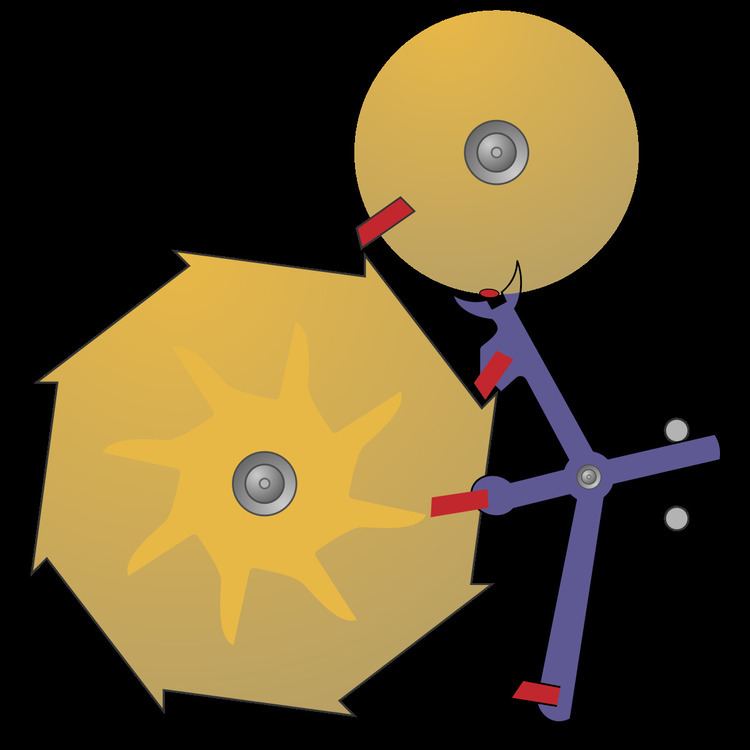 | ||
Coaxial escapement is a type of modern watch escapement mechanism invented by English watchmaker George Daniels.
Contents
Overview
Invented around 1974 and patented in 1980 by English watchmaker George Daniels, the Co-axial escapement is a modification of the lever escapement with some features of the detent escapement. Considered by some to be one of the most significant horological advancements since the invention of the lever escapement, the co-axial escapement functions with a system of 3 pallets that separates the locking function from the impulse, avoiding the sliding friction of the lever escapement. This makes lubrication of the pallets unnecessary and thereby eliminates one of the shortcomings of the traditional lever escapement.
Critical virtue
The critical virtue of the Daniels Escapement is the virtual elimination of the sliding friction component; i.e., the sliding of the pallet stones over the teeth of the escape wheel. What little sliding friction remains is due to the impossibility of maintaining an exact tangential geometry throughout the duration of an impulse.
Radial friction vs. sliding friction
By utilizing radial friction instead of sliding friction at the impulse surfaces the co-axial escapement significantly reduces friction, theoretically resulting in longer service intervals and greater accuracy over time.
Commercialization
The escapement was commercialized in 1999 by Omega SA when it introduced the first mass-produced watch incorporating the technology. When it first came to the market as the Caliber 2500, it had an oscillation rate of 28,800 bph (8 bt/s), considered a "hi-beat" movement. But the rate was reduced to 25,200 bph (7 bt/s) in the Caliber 2500C. "While Daniels has recognized the advantages of higher beat movements, he has also noted that they aggravate the problem of sliding friction in the escapement (at the escape teeth and pallets). Higher beat movements produce increased speed and pressure at these critical surfaces."
